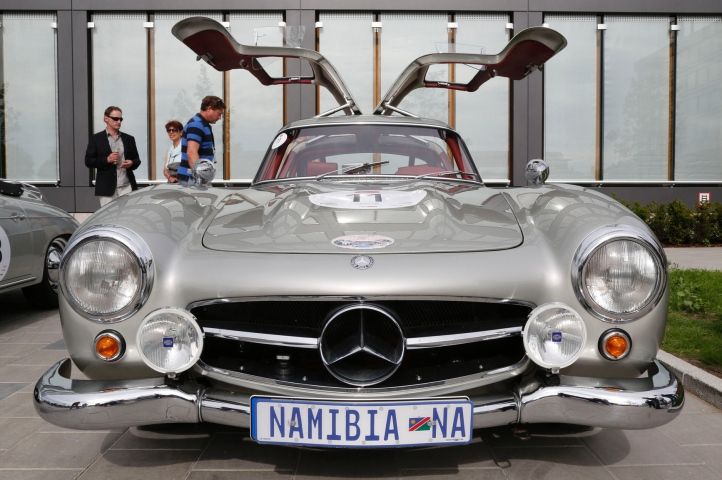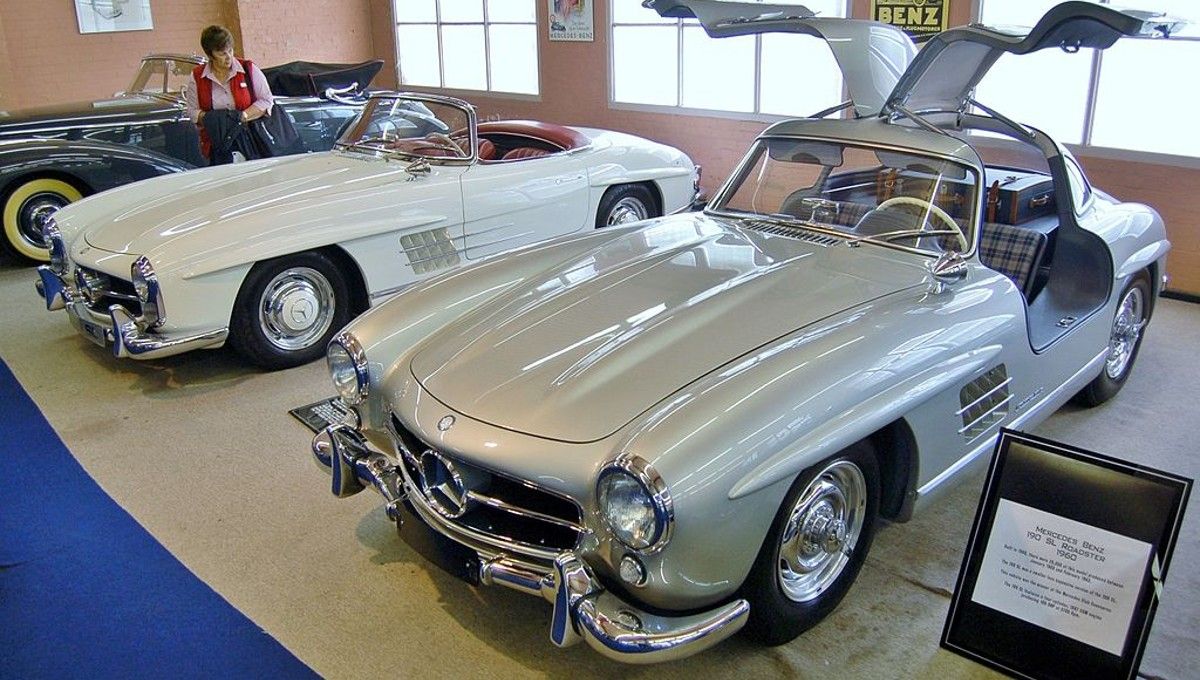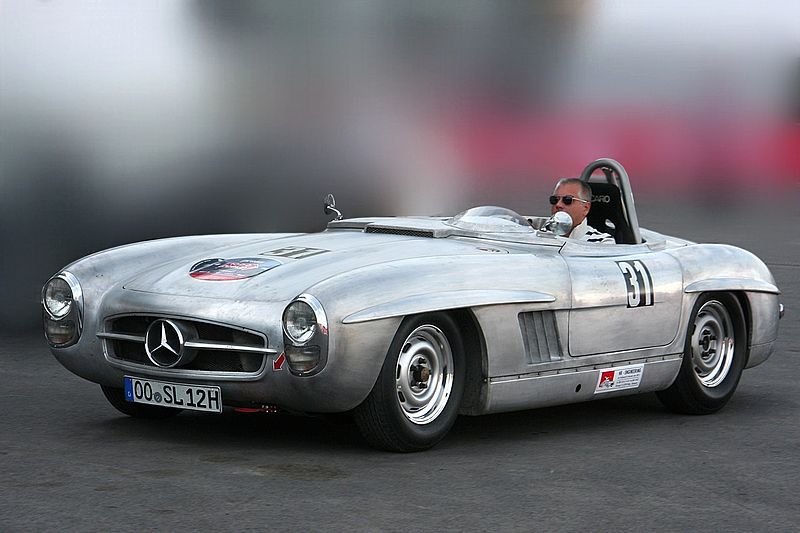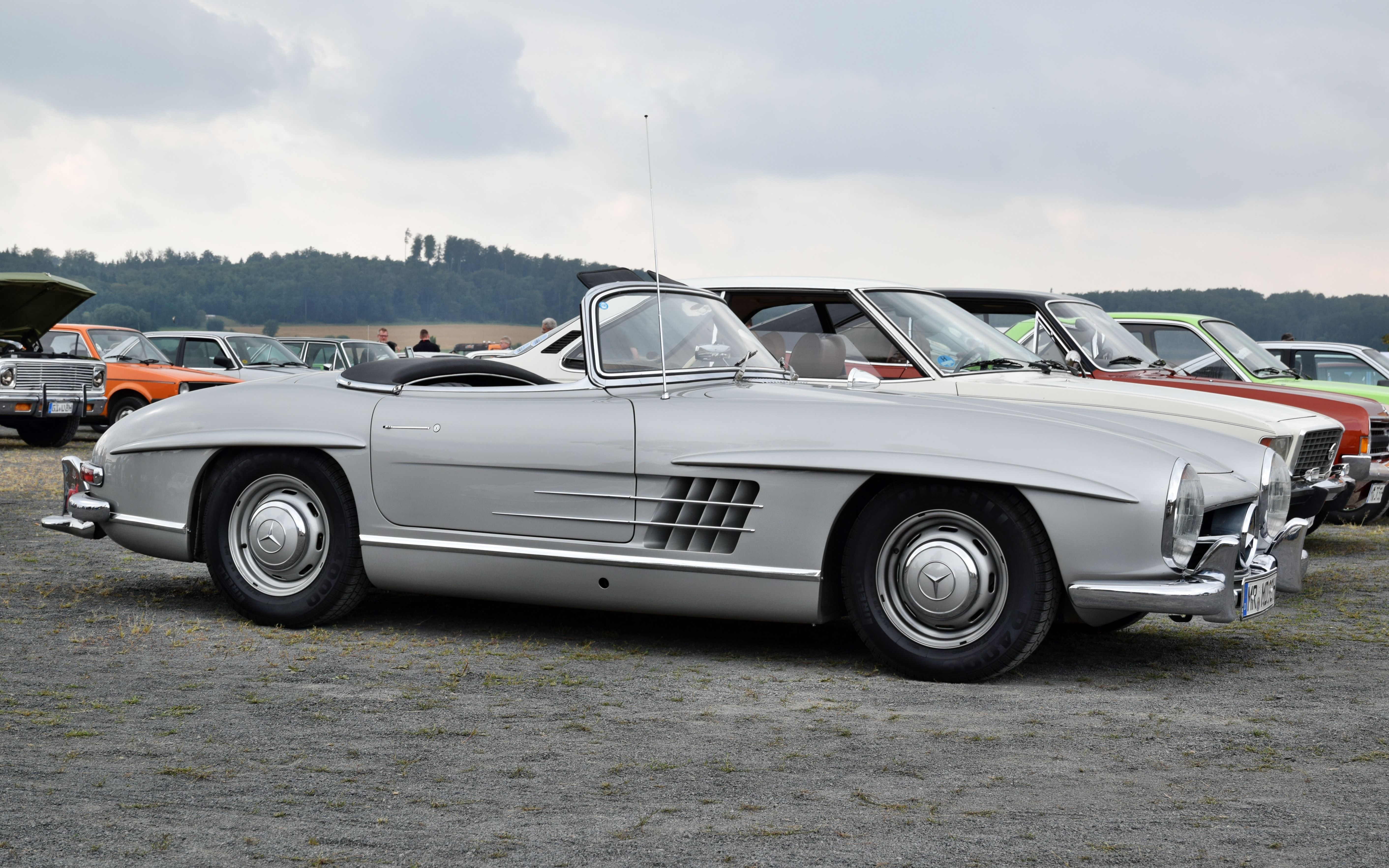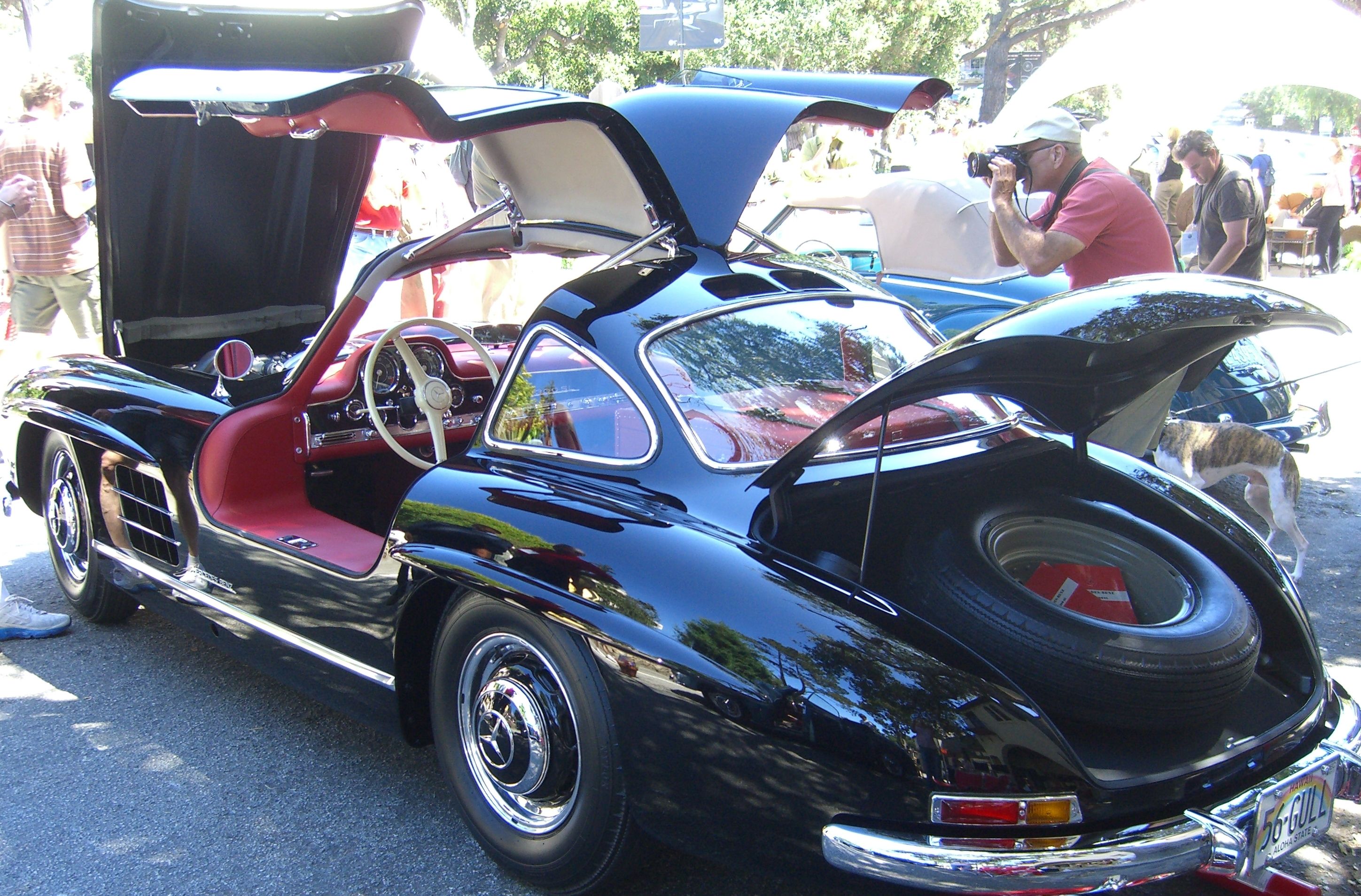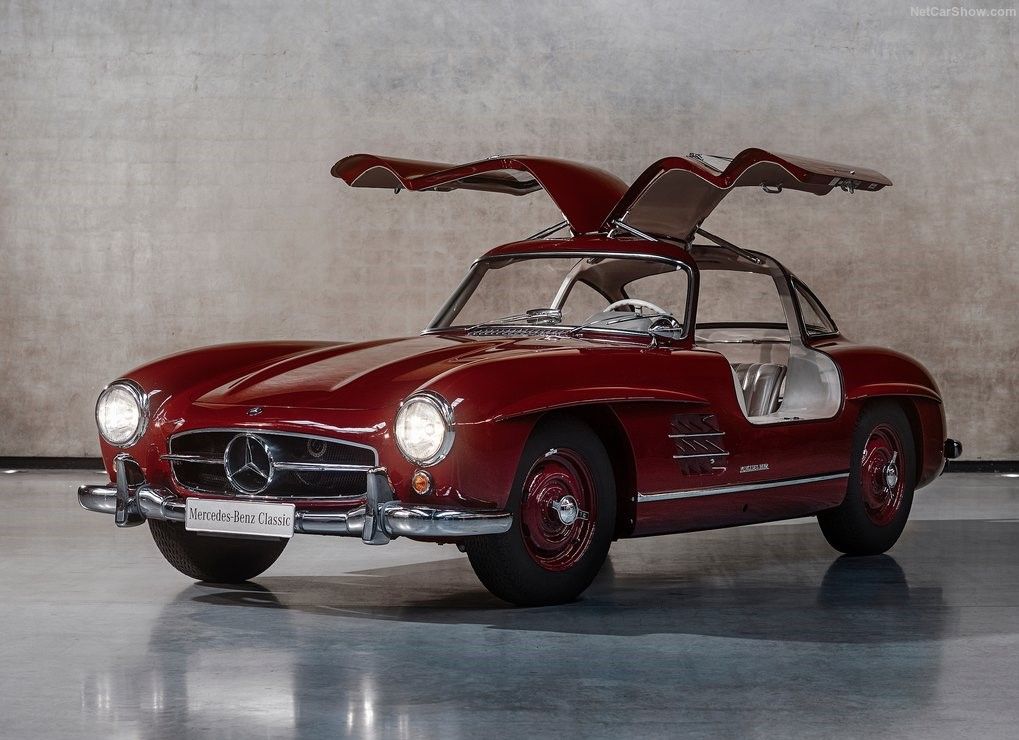As we gear up for the release of the 2022 Mercedes-AMG SL, it only feels right to revisit its rich history. The SL model has been around for 65 years, and its success is a blend of quality and luxury. The first model of the SL (Super Light) was the 1952 W194, a triumphant race car that helped Mercedes-Benz relaunch itself on the racetrack. After the W194, a new model, the W198, was launched as a sports car. It could deliver brilliant performance, acceleration, and maximum speed: the traits of a great sports car.
Mercedes launched the W198 as a gull-winged coupe and later as a roadster. In 1954, Mercedes-Benz launched the vehicle at the International Motor Sports Show in New York. This incredible car was conceived to maintain the prosperity of the W194. Inspired by Max Hoffman, a licensed importer of Mercedes-Benz vehicles in the United States, he believed that the buoyant American market was the right fit for the model. His opinion led Mercedes-Benz to release the vehicle in New York, a strategy to enter the American market instantly.
Mercedes-Benz’s engineers designed it to be the next big thing after the W194. Like its predecessor, the W198 featured mechanical direct fuel injection. It enhanced power up to nearly 50% on the 3-liter overhead camshaft straight-6 engine. It was a straight hit because of its potential to peak at 163 mph. In 1999, it emerged as the sports car of the century. It debuted as a gull-winged coupe in 1954 and a roadster in 1957, respectively.
How The 300 SL Originated
Lovers of the Mercedes-Benz 300 SL have the W194 model to thank. It was the first in the series of lightning-fast race cars. The W194 was a great race car that participated in many popular races in 1952. It placed second in the Mille Miglia and clinched the first three places at the Bern Sports Car event.
It’s amazing how the W194 won open road races at top speed, even with its engine. Back then, its engineers installed carburetors that generated about 175 hp, a volume that paled in comparison with the competition—Ferrari and Jaguar. However, its low weight and aerodynamic drag features made it an undisputed champion in races.
The 300 SL Coupe’s Rise
Contrary to popular opinion, Mercedes-Benz did not intend to mass-produce the 300 SL initially. This was because Max Hoffman proposed the production of the 300 SL solely for its rich American patrons. After Hoffman placed an order for 1000 units, the 300 SL was introduced at the New York Auto Show in 1954.
This move deviated from the norms of car debuts then, as new models were typically announced at European auto shows. Due to the stunning reception at the New York show, Mercedes-Benz began mass production of the 300 SL Coupe at its Sindelfingen factory.
Key Features Of The 300 SL Coupe
It had a weight-conscious tubular frame above a steel chassis fitted with a steel body. In a bid to lessen weight, they built the car’s doors, bonnet, boot lid, and dashboard from aluminum. For the interior, the standard seat design was a trio of checkered pattern fabrics. Their colors were a blend (cream/red, grey/blue, grey/green).
Despite the upward-opening doors, the driver had difficulty with entry and exit. To solve this, the steering wheel twirled on its hub 90 degrees away from the dashboard. The engine was a 3-liter overhead camshaft straight-six type that was water-cooled. It held the basic 2 valves per cylinder, an attribute of the W186 or “Adenauer”.
The 300 SL Roadster
In 1956, two years after the release of the Coupe edition of the W198, sales began to dip. Mercedes-Benz contemplated its options and settled for a new convertible edition. The Roadster was launched at Geneva in March 1957 and served the California automobile market.
Featuring regular doors, the cockpit section received modifications as the space frame was amended to facilitate access. The Roadster’s rear suspension was redesigned to integrate the low-pivot swing axles. Despite outweighing the Coupe by 276 pounds, the Roadster came with 240 hp, a feature that signified its dominance in the power department.
Key Features Of The 300 SL Roadster
The Roadster possessed similar features to the Coupe, with some exceptions like the storage space. The Roadster had two custom-built leather suitcases for the boot. Its windows could roll, unlike the Coupe. As for seat design, it featured leather upholstery, a revision credited to the feedback from customers.
In its 1957 debut, the Roadster’s engine came with a revolutionary Sports camshaft and 9.5:1 compression shaft. However, this feature lasted for the debut year only.
Pricing Of The 300 SL: Then And Now
Then, the Coupe sold at DM29,000 and $6,820 in Germany and the United States, while the Roadster sold at DM32,500 and $10,950 in the above countries, respectively.
Now, to acquire one of these classic race cars, you need at least $1.3 million for the Coupe and between $1.8 million to $2.4 million for the Roadster.

---Front-Angle-(1).jpg)
